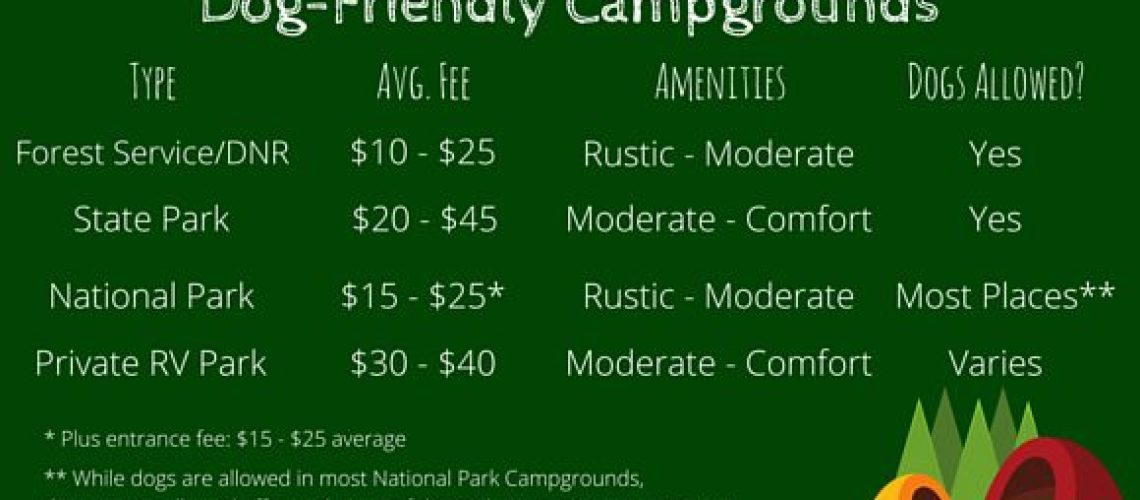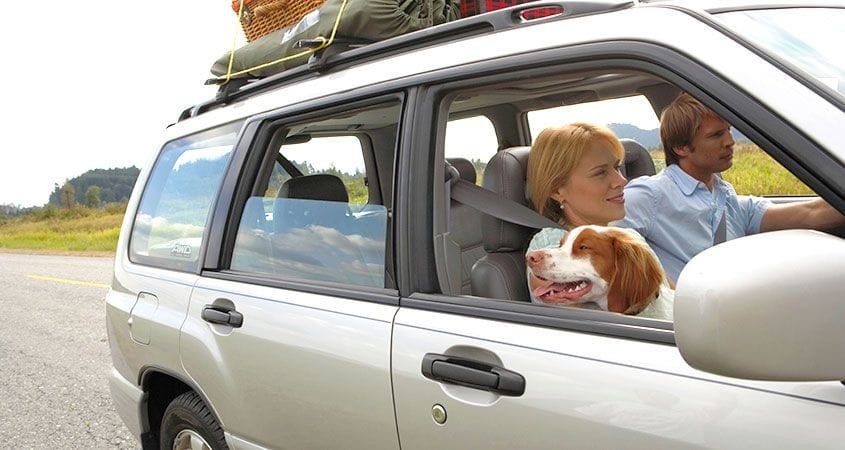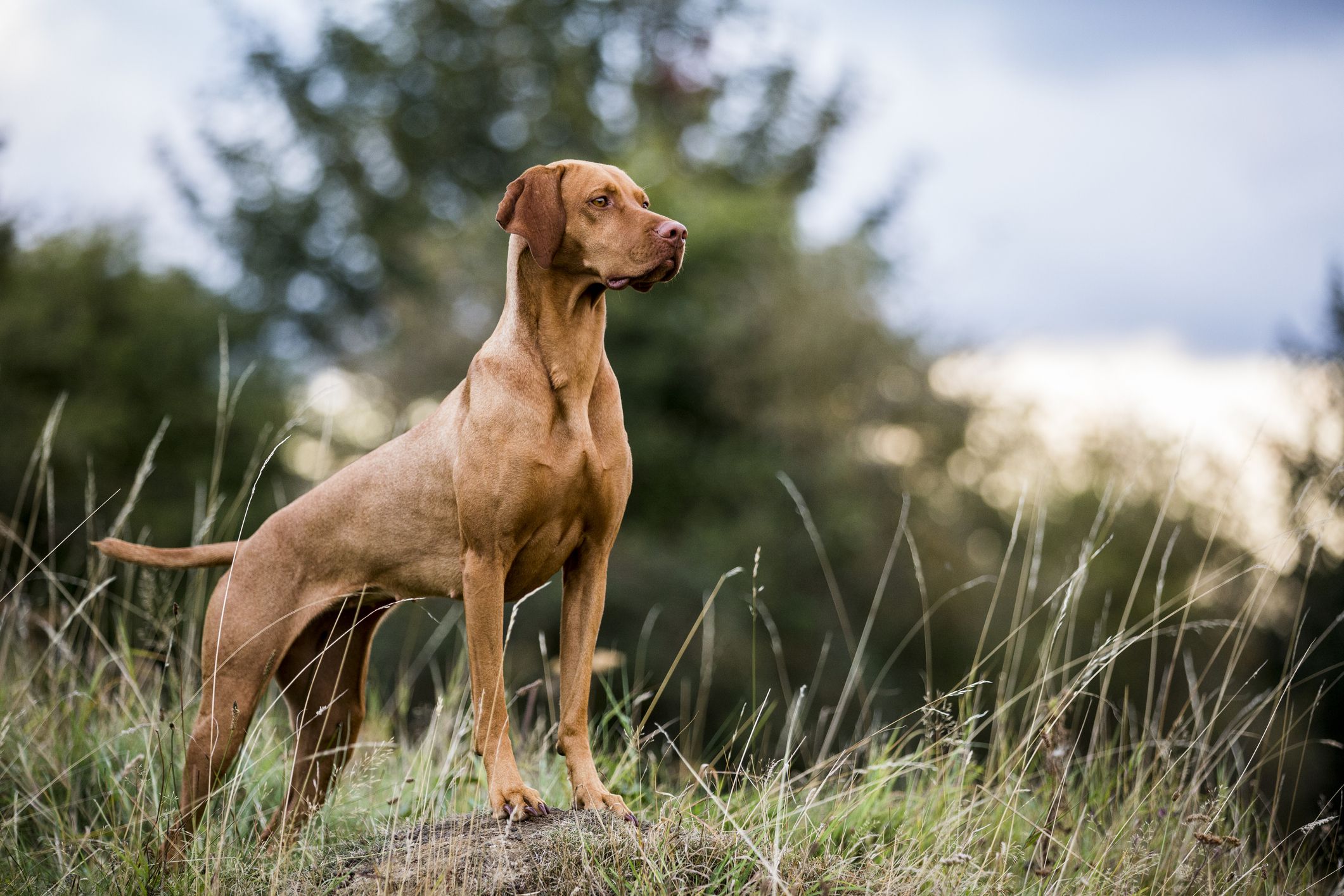In this guide, we will explore the various types of dog-friendly campgrounds, providing valuable insights to help you plan your next outdoor adventure with your furry friend.
Key Takeaways:
- Some campgrounds only allow dogs in specific areas, while others have designated dog-friendly sites. It is important to research and choose a campground that suits your needs and preferences.
- Not all campgrounds have the same amenities for dogs. Some may have fenced-in dog parks, walking trails, or pet-friendly beaches, while others may have limited facilities. Consider what activities are important for you and your dog before choosing a campground.
- It is crucial to follow the campground's rules and regulations regarding pets. This may include keeping dogs on leashes at all times, cleaning up after them, and respecting quiet hours to ensure a positive experience for everyone.
- Prioritize safety when camping with your dog. Keep them hydrated, protected from extreme weather conditions, and secure in your campsite. Bringing necessary supplies such as food, water bowls, bedding, and first aid kits is essential.
- Research nearby attractions or activities that are dog-friendly to make the most out of your camping trip. This could include hiking trails, pet-friendly restaurants or cafes, or local events that welcome four-legged companions.
What are Dog-Friendly Campgrounds and Why Are They Important for Dog Owners?
Dog-friendly campgrounds are camping sites that welcome dogs and provide amenities and facilities specifically designed for them. These campgrounds understand the importance of including our furry friends in outdoor adventures and offer a safe and enjoyable environment for both dogs and their owners.
For dog owners, these campgrounds are essential as they allow them to bring their beloved pets along on their camping trips. Dogs are often considered part of the family, so being able to include them in outdoor activities strengthens the bond between humans and their canine companions. It also eliminates the need to find alternative accommodations or leave pets behind, reducing stress and worry for pet owners.
How to Identify Whether a Campground is Dog-Friendly or Not
Identifying whether a campground is dog-friendly can be done through various methods:
- Research online: Many campgrounds have websites or listings where they specify if they allow dogs. Look for keywords like "dog-friendly" or "pets allowed."
- Contact the campground directly: Reach out to the campground via phone or email and inquire about their pet policies. They will be able to provide you with accurate information regarding dog-friendliness.
- Read reviews: Check online reviews from other campers who have brought their dogs to the campground. Their experiences can give you insights into how accommodating the campground is towards dogs.
Different Types of Dog-Friendly Campgrounds Available
There are different types of dog-friendly campgrounds available, catering to various preferences and needs:
- National parks: Some national parks have designated campsites that allow dogs. These campsites usually have specific rules regarding leashing and dog waste disposal.
- Private campgrounds: Private campgrounds are owned by individuals or companies and often have more lenient pet policies. They may offer additional amenities like fenced dog parks or dog-friendly trails.
- State parks: Similar to national parks, some state parks have designated dog-friendly campsites. However, it's important to check the specific rules and regulations of each state park.
Explaining "Primitive" Campgrounds and How They Cater to Dogs
"Primitive" campgrounds refer to camping sites that provide minimal facilities and amenities. These campgrounds often cater well to dogs due to their natural surroundings and fewer restrictions. Dogs can enjoy the freedom of exploring nature without the constraints of paved roads or crowded campsites.
Primitive campgrounds typically offer more space for dogs to roam off-leash, allowing them to engage in activities like swimming in lakes or chasing after sticks. However, it's crucial for dog owners to ensure their pets are well-behaved and under control as there may be wildlife nearby.
Amenities and Facilities Offered for Dogs and Their Owners in Dog-Friendly Campgrounds
Dog-friendly campgrounds provide a range of amenities and facilities tailored specifically for dogs:
- Dog-friendly trails: These trails are designed with dogs in mind, offering scenic routes where they can explore alongside their owners.
- Fenced dog parks: Some campgrounds have dedicated fenced areas where dogs can socialize off-leash with other dogs.
- Pet waste stations: These stations provide bags for owners to clean up after their pets, ensuring a clean environment for everyone.
- Water sources: Dog-friendly campgrounds often have water sources such as lakes or rivers where dogs can swim and cool off.
- Dog wash stations: Some campgrounds provide dog wash stations, allowing owners to clean their pets after muddy adventures.
Differences Between Private and Public Dog-Friendly Campgrounds
The main difference between private and public dog-friendly campgrounds lies in ownership and management:
Private campgrounds are owned by individuals or companies who have more control over the rules and regulations. They often offer additional amenities like fenced dog parks, organized activities for dogs, or pet-friendly cabins. However, they may charge higher fees compared to public campgrounds.
Public campgrounds, such as those in national or state parks, are owned and managed by government entities. These campgrounds tend to have stricter regulations regarding dogs due to the need to protect wildlife and maintain a natural environment. Leash requirements and designated dog-friendly areas are common in public campgrounds.
Rules and Restrictions for Dog Owners in Dog-Friendly Campgrounds
While each campground may have its specific rules, some common rules and restrictions for dog owners in dog-friendly campgrounds include:
- Leash requirements: Dogs must be kept on a leash at all times to ensure their safety and prevent them from disturbing other campers or wildlife.
- Pet waste disposal: Owners must clean up after their pets using provided bags or designated pet waste stations.
- Noise control: Dogs should not create excessive noise that disturbs other campers. Excessive barking or aggressive behavior may result in expulsion from the campground.
- Breed restrictions: Some campgrounds may have breed restrictions due to insurance policies or local regulations. It's important to check if there are any restrictions before making reservations.
Popular Examples of Dog-Friendly Campgrounds Across the Country
There are numerous dog-friendly campgrounds across the country, catering to different regions and preferences. Some popular examples include:
- Yosemite National Park in California: Yosemite offers several dog-friendly campgrounds, allowing dogs on designated trails and campsites.
- Assateague Island National Seashore in Maryland and Virginia: This coastal campground allows dogs on the beach and certain campsites, but they must be kept on a leash.
- Jellystone Park Camp-Resorts (private): Jellystone is a chain of private campgrounds that often have pet-friendly amenities like dog parks and pet-themed activities.
Tips for First-Time Campers with Dogs When Choosing a Campground
If you're a first-time camper with a dog, consider these tips when choosing a campground:
- Research pet policies in advance to ensure the campground is truly dog-friendly.
- Check if there are any breed restrictions or specific rules that may affect your dog's stay.
- Consider the amenities and facilities offered for dogs, such as fenced areas or nearby trails suitable for pets.
- Pack essential items for your dog, including food, water bowls, bedding, leash, waste bags, and any necessary medications.
- Prepare your dog by ensuring they are well-trained and comfortable with camping environments. Practice setting up tents or spending time outdoors together before the trip.
Conclusion |
|
| Type of Dog-Friendly Campground | Description |
| 1. National Parks | Offers scenic beauty and various outdoor activities, but may have restrictions on dog access. |
| 2. Private Campgrounds | Provides amenities like swimming pools and playgrounds, often with designated dog areas. |
| 3. State Parks | Offers a mix of natural beauty and recreational facilities, with varying dog policies. |
| 4. RV Parks | |

















